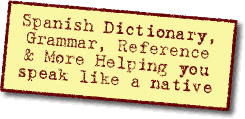|
Spanish word order is more flexible than that used in English. The subject (in this case, usted) can precede the verb or it can follow the verb. In fact, the direct object (el teléfono, in your sentences) can also precede or follow the verb.
Usted usa el teléfono.
Usa usted el teléfono.
El teléfono usa usted.
The second sentence, "Tiene usted el teléfono," is just as valid as "Usted tiene el teléfono" or "El teléfono tiene usted."
English subject-verb-object (SVO) order is strict, but when we formulate a question, we split the verb into auxiliary and main parts and the subject is placed in between. For example:
You have the telephone.
Do you have the telephone?
Spanish doesn't have this English constraint. The only thing you need to remember is that there is both an opening and a closing question mark.
¿Tiene usted el teléfono?
¿Usted tiene el teléfono?
¿El teléfono tiene usted?
|


 Similar Threads
Similar Threads







